1. Conversation Pits and Sunken Living Rooms
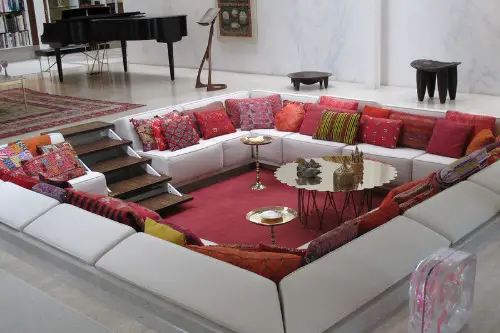
What was retro is now resonant: sunken living rooms are making a quiet comeback, rebranded as “conversation pits.” Their enclosed nature creates emotional safety and physical closeness—a response to social disconnection. These spaces minimize distractions and prioritize eye contact, making them ideal for deep chats or shared silence. It’s intimacy by design.
Architects are building seating into the floors, with plush textiles and soft lighting that reduce social friction. Even DIY versions with layered rugs and floor cushions aim to replicate the cocoon-like feel. In a world of open plans, the lowered zone becomes a refuge. Loneliness shrinks when the space itself feels like a hug.
2. Oversized Sectionals and Communal Seating
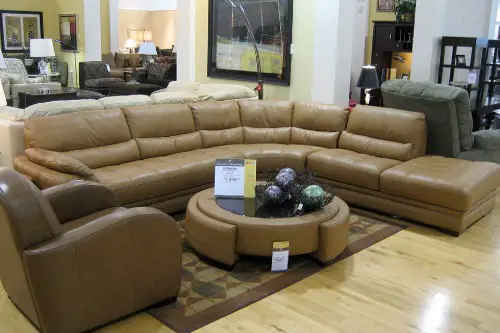
Furniture is getting bigger—not just for comfort, but for connection. Oversized sectionals and modular sofas allow more people to sit together, lounge side-by-side, or sprawl without boundaries. In a time when casual hangouts and long conversations are sought-after, seating has evolved to encourage closeness. These arrangements suggest, “Stay awhile”—not “Just passing through.”
Designers are deliberately placing sectionals in U-shaped configurations to foster intimacy. Add a few poufs or oversized ottomans and the room becomes a social landscape. It’s an architectural nudge toward staying connected—even if it’s just you, texting a friend from the cozy corner. Physical space is being built to fight emotional distance.
3. Kitchens That Face Inward
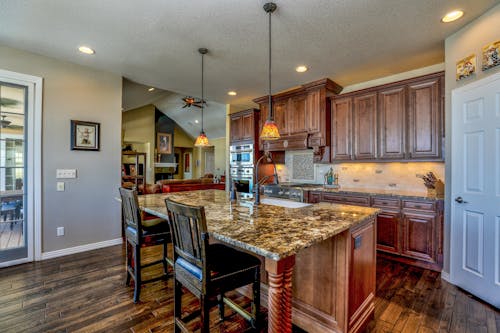
Open kitchens used to mean cooking for a crowd—but now they’re being designed to keep the cook in the mix. Islands are no longer barriers; they’re bridges, often with seating that faces inward so people can gather while meals are made. This shift reduces isolation for solo cooks and makes mealtime more communal. Design is leaning into connection, not just utility.
Appliance placement, lighting, and layout are all geared toward interaction over isolation. Even small homes are installing pass-throughs or wraparound counters to foster shared moments. Food has always brought people together—now the kitchen itself is trying to do the same. Cook-and-talk is the new love language.
4. Multi-Use Living Rooms with No Focal Point
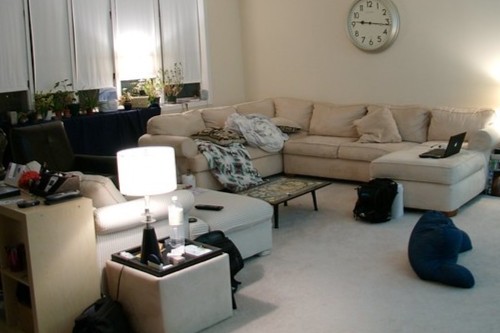
Instead of a room built around a TV, today’s living rooms often avoid a central focus altogether. Spaces are arranged for group interaction or solitary lounging, using rugs, soft corners, and portable furniture. This adaptability invites multiple people to share space simultaneously—even if they’re doing different things. It’s a response to how isolation can be softened by proximity.
Designers call it “non-hierarchical space”—a setup that values people equally, wherever they sit. You’ll see side-by-side chairs, conversation clusters, and lighting that works from any angle. The absence of a dominant feature signals that the room is for humans, not screens. Togetherness, even in layers, gets woven into the layout.
5. Indoor “Third Places”
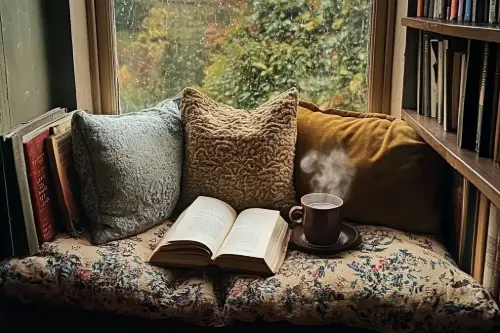
Homes are recreating the vibe of cafés, libraries, and lounges—the “third places” that used to provide community outside the home. Cozy reading nooks, gaming zones, and hybrid work areas mimic the feel of shared spaces without requiring public interaction. It’s an attempt to fill the vacuum left by shrinking social circles. Familiar formats, private access.
People are designing these areas with cafe-style lighting, library-inspired shelving, and even music zones. The goal is comfort + neutrality—spaces where one person feels less alone simply because the room suggests shared use. You don’t need guests to feel connected to humanity. Your home becomes the comforting middle ground.
6. Blended Indoor-Outdoor Spaces
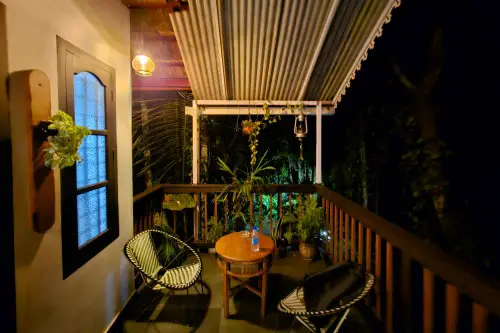
Biophilic design and “outside-in” architecture are surging—not just for aesthetics, but emotional restoration. Patios, balconies, and even window seats are being styled like full rooms, complete with rugs, lighting, and layered seating. These zones offer the feeling of shared open space, even when you’re alone. Nature becomes your companion.
Adding plants, natural textures, and seasonal elements keeps the mind in motion and the heart more grounded. The outdoors becomes accessible and soothing—a stand-in for the company we crave. Emotional wellness is now tied to sun exposure, airflow, and greenery. The boundary between inside and out is healing.
7. Open-Shelf Styling That Encourages Vulnerability

Books, records, framed notes, and even emotional objects are filling shelves once reserved for matching vases and curated plants. People are choosing to display things that matter—not just things that match. This trend moves homes toward narrative design, revealing bits of personality in place of perfection. Vulnerability in decor is becoming a subtle invitation.
It’s an antidote to curated loneliness—a suggestion that people live here and feel things. When objects tell stories, visitors (or even the homeowner) feel more grounded. Open shelves are now mirrors, showing what’s emotionally real. It’s not about impressing—it’s about connecting.
8. Spaces Designed for Eye Contact
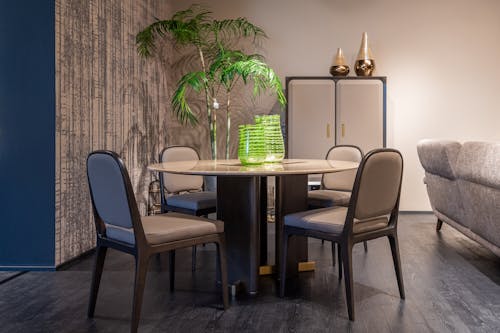
From angled armchairs to circular tables, layouts are shifting toward interpersonal alignment. Designers are choosing furniture that invites facing each other, not the wall or the television. Eye contact boosts oxytocin, reduces anxiety, and deepens social bonds—so the shape of a room can literally impact emotional health. The design is nudging connection, one chair turn at a time.
Even dining rooms are reconfiguring with flexible seating and smaller tables to reduce formality and encourage conversation. Curved benches, round rugs, and mirrored lighting are becoming tools of emotional recovery. The room asks you to look up—not just around. When eyes meet, loneliness breaks.
9. Textures That Mimic Human Contact

Warm wood, fuzzy textiles, and layered fabrics are more than cozy—they’re psychological stand-ins for physical closeness. Designers are choosing textures that evoke warmth, softness, and tactility to counter the touch deficit many feel. Velvet, boucle, and sherpa are trending not just for looks, but for how they feel emotionally. Comfort becomes kinetic.
A room that wraps you in texture reduces stress and releases serotonin. Even decorative blankets or plush rugs offer a subconscious buffer against isolation. In spaces where hugs are absent, softness offers proxy. Connection can begin with a fingertip grazing fleece.
This post 9 Trends That Are Quietly Being Driven by the Loneliness Epidemic was first published on Greenhouse Black.
